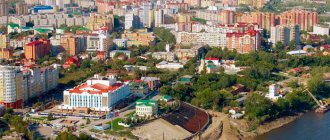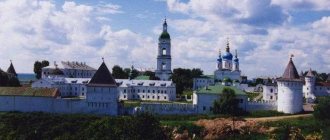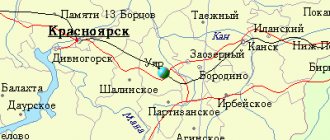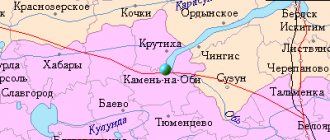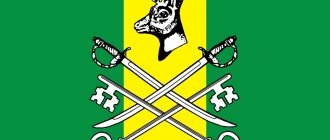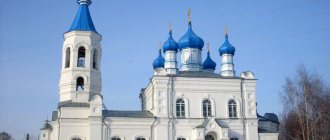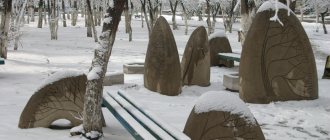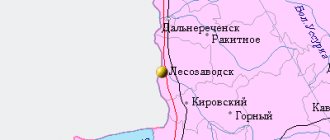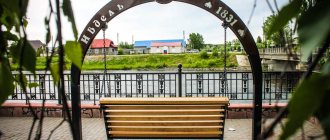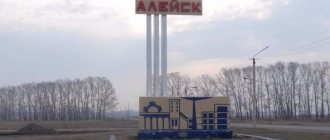Geography
The region was located in Transbaikalia.
Hydrography
The main rivers are Ingoda, Onon, Shilka and Argun (headwaters of the Amur), Khilok and Chikoy (tributaries of the Selenga), Olekma and Vitim (tributaries of the Lena). The largest lakes are Barun-Torey, Zun-Torey, B. Leprindo, Leprindokan, Nichatka, Ivano-Arakhlei Lakes, Arey, Kenon. There are mineral springs.
Minerals
Uranium deposits
- September 2006 - JSC TVEL received the right to develop the Argunskoye and Zherlovoe uranium deposits
- February 8, 2007 - JSC Techsnabexport won the competition for the development of the Berezovoye and Gornoye uranium deposits.
Reserves at the Berezovoye deposit in category C2 amount to 3.05 million tons of ore and 3,481 tons of uranium with an average uranium content in ore of 0.114%. At the same time, the predicted uranium resources in the P1 category are 500 tons.
The reserves of the Gornoye deposit in category C1 amount to 394 thousand tons of ore and 1087 tons of uranium, in category C2 - 1.77 million tons of ore and 4226 tons of uranium. The predicted resources of the P1 category deposit are 4800 tons of uranium.
Reserves of the Olovskoye deposit in category B+C1 amount to 14.61 million tons of ore and 11,898 tons of uranium. Coal production: 9223 thousand tons (2006) Power plant capacity: 1,400 million kW (2006) Electricity production: 6,000 billion kWh (2006)
Nature
Relief
Exhibition forest-steppe in the Shilka River basin. Photo by D.V. Solovyova
40% of the territory is occupied by high mid-mountain ridges. 1200–1900 m - Yablonovy, Chersky, Olekminsky Stanovik, Borshchovochny, Daursky, etc. In the north stretch the Kodar ridges (up to 3072 m high - the highest point of the Ch. O.), Kalarsky, Udokan. In the south there is the Khentei Highlands (up to 2580 m high, Mount Sokhondo), in the west there is part of the Vitim Plateau. In the southeast there are low mountains (Gazimursky, Nerchinsky ridges, etc.) and the accumulative-denudation Uldza-Borzinsky plain. The ridges are separated by depressions (Khilokskaya, Kalarskaya, Charskaya, Ingodinskaya, etc.).
Geological structure and minerals
About geological for the structure of the territory, see Art. Transbaikalia. Nedra Ch. o. extremely rich in mineral. resources. The region occupies a leading position in the country in reserves of molybdenum (1/3 of the reserves of the Russian Federation), zirconium (32%), copper (over 24%), titanium (approx. 20%), uranium (approx. 16%). Large and unique deposits are localized in the territory: copper ores (Udokan deposit), molybdenum (complex Bugdainskoye, with Pb, Ag and Au), zirconium (complex Katuginskoye, with Ta, Nb, REE and U), titanium (complex Chineyskoye, with large reserves of iron ore; Kruchininskoye apatite-ilmenite-titanium-magnetite), uranium (Streltsovskoye ore field), gemstone raw materials (Sherlovogorskoye - beryl, topaz and tourmaline; Malkhanskoye - colored tourmaline). The territory has a powerful raw material base of gold (about 9% of the reserves of the Russian Federation), there are several. dozens of primary deposits (including the Balei-Taseevskoe gold and silver deposit, which is super-large in terms of initial reserves), and a large number of placer deposits. Ch. about. also stands out in the Russian Federation means. fluorite reserves (large deposits - Garsonuiskoye and Urtuiskoye).
Climate
The climate is sharply continental. Winters are long and severe with stable clear weather, summers are warm and hot in the south. Wed. January temperatures range from -37.5 °C in the north to -19.7 °C in the south (absolute minimum -66 °C), July 13.6 °C and 21 °C, respectively (absolute maximum 42 °C). Precipitation ranges from 250–300 mm per year in the south to 900 mm or more in the north; Max. the amount falls in July–August. Snow cover thickness is 10–20 cm or less in the south, 80–100 cm in the north in the mountains. The glaciation area on the Kodar ridge is 19 km2. The Kodar, Udokan, Kalarsky, Chikokonsky, Chatanginsky ridges are areas of increased avalanche danger. Permafrost is developed everywhere, with island permafrost in the south.
Inland waters
In Ch. o. there is a watershed between the basins of the Pacific [Shilka, Onon, Ingoda, Argun (Amur River basin)] and Northern Arctic [Khilok, Chikoy (tributaries of the Selenga River, Lake Baikal basin) rivers); Olekma, Vitim (tributaries of the Lena River)] oceans. In winter, rivers freeze to the bottom and ice forms. In summer, during the rainy season, catastrophic events occur. floods. The rivers are fed by rain and snow. Of the 15,000 lakes, the largest are Bolshoye Leprindo, Leprindokan, Nichatka, Arakhley, Kenon, Shakshinskoye, as well as Zun-Torey and Barun-Torey (mineralized). Large reservoirs – Kharanorskoye, Priargunskoye.
Soils, flora and fauna
More than 50% of the territory is occupied by mid-taiga forests of Gmelin larch (Daurian) with an undergrowth of dwarf cedar, dwarf birch, rhododendron on podburs; in the southeast there are larch herbaceous forests with an admixture of pine and birch on sod-taiga deep-freezing soils; in the south (on the Khentei Highlands) there are dark coniferous forests of cedar and spruce. In the north there is larch taiga at altitudes. 1300–1500 m is replaced by a narrow belt of cedar-elfin thickets with an admixture of Middendorf birch and alder, passing higher into rocky, lichen tundra on lithozems and char. To the southeast Exposure forest-steppe areas are widely developed: in the north. on the slopes there are forests of larch, pine, and birch with an undergrowth of rhododendron; on the southern slopes there are steppes. In the Shilka basin there are representatives of the monsoon forests of the Far East (Mongolian oak, elm, hazel). Bottoms of intermountain basins center. and sowing areas are swampy (ryams). In the south there are grass steppes, tansy steppes with thickets of elm and apricot, freezing on powdery-carbonate chernozems. In the feather grass-wormwood steppes there are light chestnut soils. Around the lakes Zun-Torey and Barun-Torey there are abundant salt marshes, the soils are deep-frozen solonchaks. In general, the flora includes more than 1,700 species of higher vascular plants (rare ones include radiola rosea, milky-flowering peony, Bush lily, etc.). Berry bushes (blueberries, lingonberries) are abundant.
There are more than 500 species of vertebrates, 330 species of birds, 5 species of amphibians. In the taiga, bear, deer, musk deer, elk, mountain hare, sable, wolf, squirrel, chipmunk are common; in the highlands - bighorn sheep, reindeer; in forest-steppes and steppes - ground squirrel, jerboa, pika, hamster, tarbagan. Among the birds that live in the mountain tundra are the white partridge and the alpine accentor; in the taiga - capercaillie, hazel grouse, black grouse; in the steppes - Mongolian and gray larks, pipit, bunting, etc. Blood-sucking insects and ticks are abundant. Numerous birds nest on lakes Zun-Torey and Barun-Torey. waterfowl and semi-aquatic birds. There are 40 species of fish in the rivers, lenok, whitefish, grayling, taimen, and carp are common; Endemics have almost disappeared - kaluga, Amur sturgeon, Davatchan. In the Red Book of Ch. o. 57 species of birds, 25 species of mammals, 7 species of fish were included.
Condition and protection of the environment
Tense environmental The situation is typical for industrially developed areas of the southeast. parts of the Black Sea region, in areas where mineral resources are developed (especially uranium, polymetallic ores, etc.). The most polluted air is in the cities of Chita, Petrovsk-Zabaikalsky, Krasnokamensk. The category of “dirty” includes rivers. Nercha, sections of the Argun, Shilka, Ingoda rivers.
Protected natural areas occupy 5.4% of the area, among them - the Daursky Reserve, the Sokhondinsky Reserve, the national. Alkhanay, Chikoy parks, 1 natural park, federal nature reserves (Burkalsky, Tsasucheysky Bor, Dzeren Valley, etc.), 18 regional reserves, 65 natural monuments (Kodara glaciers; extinct volcanoes Aku, Syni, Chepe; Charsky Sands tract; Arest lakes , Shibety; Kheetei cave, etc.). Lakes Barun-Torey and Zun-Torey belong to wetlands protected under the Ramsar Convention.
Population
The population of the region is 1119 thousand people. (2005). The population density is 2.6 people/km² (2005), the share of the urban population is 63.6% (2005).
According to the 2002 All-Russian Population Census, the ethnic composition of the region's population was as follows:
| People | Number of people in 2002, thousand ([www.perepis2002.ru/index.html?id=17 *]) |
| Russians | 89,8 % |
| Buryats | 6,1 % |
| Ukrainians | 1 % |
| Tatars | 0,7 % |
| Armenians | 0,31 % |
| Chuvash | 0,11 % |
Historical sketch
The oldest traces of human activity in the region (about 300 thousand years ago) are represented by deflated stone products (Sukhotino-16 on the Ingoda River, Masterova Gora on the Khilok River, Taranovka on the Chikoy River). The early period of the Upper Paleolithic includes the Tolbaga and Kunaleyskaya cultures, the later - Studenovskaya and Sukhotinskaya (all in Western Transbaikalia), including dwellings in the form of tents and huts with facings of stones; works of art, etc. Approx. 11 thousand years ago the Mesolithic begins, at its end there are ground burials with crouched corpses (Menzin culture in the southwest of the region). The Neolithic (from about the 5th millennium BC) is represented by taiga and steppe settlements, round-bottomed ceramics with stamped ornaments, and writings.
Archeological monuments from the territory of the former Chita region: 1 – image of a bear’s head made from the bone of a woolly rhinoceros. Tolbaga parking lot (Petrovsko-Zabaikalsky district); 2 – writing Larg... ZabSU (1, 3); photo by S.V. Alkina (2); Transbaikal Regional Museum of Local Lore (4, 5)
In the Early Metal Age (from the end of the 1st third of the 2nd millennium BC), sources of copper and tin were used in the basins of the Argun, Shilka, and Onon rivers. Remains of smelting furnaces are known. The culture of tiled graves, deer stones, and from the 2nd floor spread in the steppe. 1st thousand in the river basin Chikoy – kereksurs; in the forest-steppe - the palace culture of semi-sedentary cattle breeders and hunters; in the taiga - the Khentei culture of hunters.
Con. 1st millennium BC e. – beginning 1st millennium AD e. represented by the Zorgol culture (correlated with the northern Xianbi group), dep. monuments of the Xiongnu culture. In the East The Burkhotuy culture (presumably one of the groups of the Shivei people) has been identified in Transbaikalia; in the forest-steppe and steppe of the east and southeast of Ch. – Darasun culture (ca. 6–9 centuries). A number of monuments from the 10th–14th centuries. associated with early Mongolian culture. OK. the turn of the 1st and 2nd thousand in the river basin. Shilka appears a system of fortified settlements with Far Eastern traditions of fortification, cultivation of millet, buckwheat, etc., which is associated with the advancement of Mohe groups from Sr. Amur region. In the 11th–12th centuries. on the left bank of the Argun, approx. 10 fortified settlements. systems to the north border of the Khitan state - the Liao Empire (“The Wall of Genghis Khan”).
From the 13th century the region was part of the Mongol Empire, mainly was part of the ulus of Tuluy, the youngest son of Genghis Khan. Hirhiru is associated with Yesunke (Esungu, Isunke); Kondui Palace, burials on Mount Okoshki, etc. - from Mongol. aristocracy; Undugun culture 12–15 centuries. – presumably with groups of the local Tungus-speaking population. With sunset Mong. powers in con. 14th century and the weakening of the steppe Mongols, the Mongol-speaking group from the shores of Lake Baikal advances to the East. Transbaikalia along the Khilok and Chikoy rivers, displacing the Tungus and influencing their culture. By the 17th century A striped band of foot, reindeer, and horse Tungus (Evenks) and Mongol-speaking groups is formed.
Since the 1640s Transbaikalia entered the sphere of interests of Rus. state The first Russian explorers who appeared in the region in the 2nd half. 1640s – 1st half. 1650s, became I. I. Pokhabov and E. P. Khabarov. In 1653, a detachment of Cossacks led by P.I. Beketov founded Nelyutsky (from 1659 Nerchinsky) and Irgensky forts. From ser. 1650s the region was used as a political place. exile and hard labor (the first exile was Archpriest Avvakum Petrov; in the 19th – early 20th centuries, the Decembrists, participants in the Polish uprising of 1863–64 and the Garibaldians who joined them, N.G. Chernyshevsky, populists, Bolsheviks, Socialist Revolutionaries, etc.). As a result of the signing of the Treaty of Nerchinsk in 1689, Transbaikalia became the extreme southeast for more than 150 years. territory of Russia. During this period, the settlement of Mongol-speaking groups on the Ingoda, Aga and Onon rivers continued. In 1708–64 the region was part of the Siberian province, in 1764–1851 – of the Irkutsk province. From the beginning 18th century the mining industry developed, the first fatherland was obtained. silver and then gold. Borders of Russia empires in the region were specified by the Burin Treaty of 1727 and the Kyakhta Treaty of 1727. In the 18th–19th centuries. The most important trade routes between Russia and China passed through Transbaikalia, ch. Kyakhta became the center of trade (founded in 1728, from 1743 Kyakhtinskaya Sloboda). All R. – 2nd floor 18th century The Nerchinsk mountain region was formed. The region was part of the Transbaikal region (1851–1922) and the Transbaikal province (1922–1926), and in 1926–30 it comprised the Chita and Sretensky districts of the Far Eastern Territory. In 1929, during the Soviet-Chinese conflict on the Chinese Eastern Railway, units of the Special Red Banner Far Eastern Army moved from the territory of Transbaikalia under command. V. K. Blucher.
In 1930–36 Transbaikalia was part of the East Siberian Territory. By decree of the All-Russian Central Executive Committee of March 5, 1934, the Ch. o. was formed for the first time in its composition. with its center in Chita. Pl. 272.1 thousand km2. Us. St. 700 thousand people Included 22 districts, 4 cities, 8 workers' settlements. By resolution of the Presidium of the All-Russian Central Executive Committee of December 7, 1934 Ch. was abolished due to the disaggregation of the East Siberian Territory. In 1935, the Transbaikal Military District was formed with its center in Chita. In 1936–37 Transbaikalia was part of the East Siberian region.
Secondary Ch. o. formed by a resolution of the Central Executive Committee of the USSR dated September 26, 1937. Included 21 districts and Vitimo-Olyokminsky national. env. East Siberian region; Zeya region (4 districts); Aginsky and Ulan-Onon aimags of Buryat-Mong. Autonomous Soviet Socialist Republic that made up the Aginsky Buryat-Mong. (since 1958 Buryat) national. (from 1977–1980 autonomous) district. Pl. 640.8 thousand km2 (1947), 431.5 thousand km2 (1986). Us. St. 1.3 million people (1986), St. 1 million people (2005). By the Decree of the Organizing Committee of the Armed Forces of the RSFSR dated September 21, 1938, the Vitimo-Olyokminsky national was liquidated. env. Baley (1938), Borzya, Mogocha (both 1950), Khilok and Shilka (both 1951), Krasnokamensk (1969) received the status of cities. By resolution of the Presidium of the USSR Supreme Council dated August 2, 1948, 6 districts of the Ch. were transferred to the Amur region.
Ch. about. was an important center of the mining industry (including the mining of coal, gold, fluorspar, tantalum, tungsten, molybdenum, rare metals, uranium, etc.), logging, in the 2nd half. 20th century Mechanical engineering developed from the end. 1960s - light industry. Railway traffic is open. lines: Kharanor - Dosatui (1940, narrow gauge), Borzya - Solovyovsk (1941), Dosatui - Tsurukhaytai (since 1962 Priargunsk) (1957, narrow gauge), lines Kharanor - Urulyungui - Krasnokamensk (1972) and Urulyungui - Priargunsk (1973) broad gauge ; sections Nizhneangarsk - Novaya Chara and Novaya Chara - Tynda (both 1987) of the Baikal-Amur Mainline.
According to the Law of the Russian Federation of April 21, 1992 “On Amendments and Additions to the Constitution (Basic Law) of the RSFSR”, the status is independent. a subject of the Russian Federation (while remaining territorially part of the Ch. o.) received the Aginsky Buryat Autonomous Okrug. Since 2000 Ch. as part of the Siberian Federal District.
Based on the results of the referendum held on March 11, 2007 in Ch. and Aginsk Buryats. Autonomous Okrug, Ch. o. became part of the Trans-Baikal Territory, formed on March 1, 2008 by the Federal Law of the Russian Federation dated July 21, 2007.
Administrative division
- Akshinsky district
- Alexandrovo-Zavodsky district
- Baleysky district
- Borzinsky district
- Gazimuro-Zavodsky district
- Zabaikalsky district
- Kalarsky district
- Kalgansky district
- Karymsky district
- Krasnokamensky district
- Krasnochikoisky district
- Kyrinsky district
- Mogochinsky district
- Nerchinsky district
- Nerchinsko-Zavodsky district
- Olovyannisky district
- Ononsky district
- Petrovsk-Zabaikalsky district
- Priargunsky district
- Sretensky district
- Tungiro-Olyokminsky district
- Tungochensky district
- Uletovo district
- Khiloksky district
- Chernyshevsky district
- Chita district
- Shelopuginsky district
- Shilkinsky district
Settlements
According to the 2002 population census, there were 10 cities, 44 urban-type settlements[3] and 752 rural settlements[4] in the Chita region. The table below shows the largest settlements in the region, including all cities (in bold).
| Settlements with more than 5 thousand inhabitants as of January 1, 2007 | |||||||||||||||||||||||||||||||||||||||||||||||||||||||||||
|
Transbaikal region
Trans-Baikal Territory is a subject of the Russian Federation. Belongs to the Siberian Federal District. The administrative center of the region is the city of Chita. Formed during the unification of the Chita region and the Aginsky Buryat Autonomous Okrug. The region borders on the Amur and Irkutsk regions, the republics of Buryatia and Yakutia. The area of the Trans-Baikal Territory is 431,892 sq km, the population, as of 2021, is 1.1 million people. The climate of the region is temperate, sharply continental, with cold winters.
The main nature reserve of the Trans-Baikal Territory is Sokhondinsky, created in 1926. It is located on the watershed of the river systems of Asia; the rivers flowing into the Amur and also the Burecha River, which flows into Baikal, originate nearby. The reserve preserves the untouched nature of the south of Transbaikalia, a mixture of taiga and steppes. The “center” of the reserve is the extinct volcano Sokhondo. An unusual natural object is the Chara Sands, literally a desert in the middle of the taiga. In the Char Valley, between the Bolshoi and Middle Sakukan rivers, lie dunes of pure fine sand.
Another environmental protection zone is the Daursky Biosphere Reserve. It was formed in 1987, mainly to protect the bird population. The territory of the reserve is located in the steppe zone, with strong fluctuations in daily and annual temperatures. The main object of the reserve is the Torey Lakes, which are the remnants of a large lake. The reserve is home to more than 300 bird species, of which 28 are listed in the Red Book.
Many attractions are located in the capital of the region.
One of the oldest museums in Siberia and the Far East is the Chita Regional Museum, its collection contains over 180 thousand monuments of the natural history of the region, exhibits of material and spiritual culture, collections of archeology, ethnography, one of the most interesting exhibits of the collection is the manuscripts of the Decembrists. Those who are interested in the history of the Decembrists should visit the city of Petrovsk-Zabaikalsky, where 71 Decembrists were in exile from 1830 to 1839. 10 wives of the Decembrists also lived here. The Decembrist Museum is opened in the house of Princess Trubetskoy. On March 1, 2008, as a result of a decision based on a referendum of the peoples of the Aginsky Buryat Autonomous Okrug and the Chita Region, the Trans-Baikal Territory was formed. Preliminary work on the unification of the Aginsky Buryat Autonomous Okrug and the Chita Region began at the level of regional authorities in April 2006. The head of the administration of the Aginsky Buryat Autonomous Okrug Bair Zhamsuev, the Governor of the Chita region Ravil Geniatulin, the heads of regional parliaments Anatoly Romanov and Dashi Dugarov sent a letter to Russian President Vladimir Putin, and on November 17, 2006 he supported this initiative. The referendum on unification took place on March 11, 2007.
Notes
- [www.gks.ru/free_doc/new_site/vvp/vrp98-14.xlsx Gross regional product by constituent entities of the Russian Federation in 1998-2014] (Russian) (xls). Rosstat.
- [www.gks.ru/free_doc/new_site/vvp/vrp98-14.xlsx Gross regional product by constituent entities of the Russian Federation in 1998-2014] (Russian) (xls). Rosstat.
- [perepis2002.ru/ct/doc/1_TOM_01_05.xls Grouping of cities and towns by population by constituent entities of the Russian Federation]
- [perepis2002.ru/ct/doc/1_TOM_01_06.xls Grouping of rural settlements by population by constituent entity of the Russian Federation]
Excerpt characterizing the Chita region
His daughter, Princess Helen, lightly holding the folds of her dress, walked between the chairs, and the smile shone even brighter on her beautiful face. Pierre looked with almost frightened, delighted eyes at this beauty as she passed by him. “Very good,” said Prince Andrei. “Very,” said Pierre. Passing by, Prince Vasily grabbed Pierre's hand and turned to Anna Pavlovna. “Give me this bear,” he said. “He’s been living with me for a month, and this is the first time I’ve seen him in the world.” A young man needs nothing more than the company of smart women. Anna Pavlovna smiled and promised to take care of Pierre, who, she knew, was related to Prince Vasily on his father’s side. The elderly lady, who had previously been sitting ma tante, hastily stood up and caught up with Prince Vasily in the hallway. All the previous pretense of interest disappeared from her face. Her kind, tear-stained face expressed only anxiety and fear. - What will you tell me, prince, about my Boris? – she said, catching up with him in the hallway. (She pronounced the name Boris with a special emphasis on o). – I can’t stay longer in St. Petersburg. Tell me, what news can I bring to my poor boy? Despite the fact that Prince Vasily listened reluctantly and almost discourteously to the elderly lady and even showed impatience, she smiled tenderly and touchingly at him and, so that he would not leave, took his hand. “What should you say to the sovereign, and he will be directly transferred to the guard,” she asked. “Believe me, I will do everything I can, princess,” answered Prince Vasily, “but it’s difficult for me to ask the sovereign; I would advise you to contact Rumyantsev, through Prince Golitsyn: that would be smarter. The elderly lady bore the name of Princess Drubetskaya, one of the best families in Russia, but she was poor, had long since left the world and had lost her previous connections. She has now come to secure a placement in the guard for her only son. Only then, in order to see Prince Vasily, did she introduce herself and come to Anna Pavlovna for the evening, only then did she listen to the Viscount’s story. She was frightened by the words of Prince Vasily; Once upon a time her beautiful face expressed anger, but this lasted only a minute. She smiled again and grabbed Prince Vasily’s hand more tightly. “Listen, prince,” she said, “I never asked you, I will never ask you, I never reminded you of my father’s friendship for you.” But now, I conjure you by God, do this for my son, and I will consider you a benefactor,” she hastily added. - No, you are not angry, but you promise me. I asked Golitsyn, but he refused. Soyez le bon enfant que vous аvez ete, [Be the kind fellow you were,] she said, trying to smile, while there were tears in her eyes. “Dad, we’ll be late,” said Princess Helen, who was waiting at the door, turning her beautiful head on her antique shoulders. But influence in the world is capital, which must be protected so that it does not disappear. Prince Vasily knew this, and once he realized that if he began to ask for everyone who asked him, then soon he would not be able to ask for himself, he rarely used his influence. In the case of Princess Drubetskaya, however, after her new call, he felt something like a reproach of conscience. She reminded him of the truth: he owed his first steps in the service to her father. In addition, he saw from her methods that she was one of those women, especially mothers, who, once they have taken something into their heads, will not leave until their desires are fulfilled, and otherwise are ready for daily every minute harassment and even on stage. This last consideration shook him. “Here Anna Mikhailovna,” he said with his usual familiarity and boredom in his voice, “it’s almost impossible for me to do what you want; but to prove to you how much I love you and honor the memory of your late father, I will do the impossible: your son will be transferred to the guard, here is my hand to you. Are you satisfied? - My dear, you are a benefactor! I didn’t expect anything else from you; I knew how kind you were. He wanted to leave. - Wait, two words. Une fois passe aux gardes... [Once he joins the guard...] - She hesitated: - You are good with Mikhail Ilarionovich Kutuzov, recommend Boris to him as an adjutant. Then I would be at peace, and then I would... Prince Vasily smiled. - I don’t promise that. You don’t know how Kutuzov has been besieged since he was appointed commander-in-chief. He himself told me that all the Moscow ladies agreed to give him all their children as adjutants. - No, promise, I won’t let you in, my dear, my benefactor... - Dad! - the beauty repeated again in the same tone, - we will be late. - Well, au revoir, [goodbye,] goodbye. Do you see? - So tomorrow you will report to the sovereign? - Definitely, but I don’t promise Kutuzov. “No, promise, promise, Basile, [Vasily],” Anna Mikhailovna said after him, with the smile of a young coquette, which must once have been characteristic of her, but now did not suit her exhausted face. She apparently forgot her years and, out of habit, used all the old feminine remedies. But as soon as he left, her face again took on the same cold, feigned expression that was on it before. She returned to the circle, in which the Viscount continued to talk, and again pretended to listen, waiting for the time to leave, since her work was done. – But how do you find all this latest comedy du sacre de Milan? [Milan anointing?] - said Anna Pavlovna. Et la nouvelle comedie des peuples de Genes et de Lucques, qui viennent presenter leurs voeux a M. Buonaparte assis sur un throne, et exaucant les voeux des nations! Adorable! Non, mais c'est a en devenir folle! On dirait, que le monde entier a perdu la tete. [And here is a new comedy: the people of Genoa and Lucca express their desires to Mr. Bonaparte. And Mr. Bonaparte sits on the throne and fulfills the wishes of the people. 0! This is amazing! No, this can drive you crazy. You will think that the whole world has lost its head.] Prince Andrei grinned, looking straight into Anna Pavlovna’s face. “Dieu me la donne, gare a qui la touche,” he said (the words Bonaparte said when laying on the crown). – On dit qu'il a ete tres beau en prononcant ces paroles, [God gave me the crown. Trouble is to those who touch it. “They say he was very good at pronouncing these words,” he added and once again repeated these words in Italian: “Dio mi la dona, guai a chi la tocca.” “J'espere enfin,” continued Anna Pavlovna, “que ca a ete la goutte d'eau qui fera deborder le verre.” Les souverains ne peuvent plus supporter cet homme, qui menace tout. [I hope that this was finally the drop that overflows the glass. The sovereigns can no longer tolerate this man who threatens everything.] – Les souverains? Je ne parle pas de la Russie,” said the Viscount politely and hopelessly: “Les souverains, madame!” Qu'ont ils fait pour Louis XVII, pour la reine, pour madame Elisabeth? Rien,” he continued, animated. - Et croyez moi, ils subissent la punition pour leur trahison de la cause des Bourbons. Les souverains? Ils envoient des ambassadeurs complimenter l'usurpateur. [Sirs! I'm not talking about Russia. Sirs! But what did they do for Louis XVII, for the queen, for Elizabeth? Nothing. And, believe me, they are being punished for their betrayal of the Bourbon cause. Sirs! They send ambassadors to greet the thief of the throne.] And he, sighing contemptuously, changed his position again. Prince Hippolyte, who had been looking at the Viscount through his lorgnette for a long time, suddenly at these words turned his whole body to the little princess and, asking her for a needle, began to show her, drawing with a needle on the table, the coat of arms of Condé. He explained this coat of arms to her with such a significant air, as if the princess had asked him about it. – Baton de gueules, engrele de gueules d’azur – maison Conde, [A phrase that cannot be translated literally, as it consists of conventional heraldic terms that are not used quite accurately. The general meaning is this: The coat of arms of Condé represents a shield with red and blue narrow jagged stripes,” he said. The princess listened, smiling. “If Bonaparte remains on the throne of France for another year,” the Viscount continued the conversation that had begun, with the air of a man who does not listen to others, but in a matter that is best known to him, following only the course of his thoughts, “then things will go too far.” Through intrigue, violence, expulsions, executions, society, I mean good society, French, will be destroyed forever, and then... He shrugged his shoulders and spread his hands. Pierre wanted to say something: the conversation interested him, but Anna Pavlovna, who was watching him, interrupted. “Emperor Alexander,” she said with the sadness that always accompanied her speeches about the imperial family, “announced that he would let the French themselves choose their mode of government.” And I think there is no doubt that the whole nation, freed from the usurper, will throw itself into the hands of the rightful king,” said Anna Pavlovna, trying to be polite to the emigrant and royalist. “This is doubtful,” said Prince Andrei. “Monsieur le vicomte [Mr. Viscount] quite rightly believes that things have already gone too far. I think it will be difficult to go back to the old ways. “As far as I heard,” Pierre, blushing, again intervened in the conversation, “almost the entire nobility has already gone over to Bonaparte’s side.” “That’s what the Bonapartists say,” said the Viscount, without looking at Pierre. – Now it is difficult to know the public opinion of France. “Bonaparte l'a dit, [Bonaparte said this," said Prince Andrei with a grin. (It was clear that he did not like the Viscount, and that, although he did not look at him, he directed his speeches against him.)
